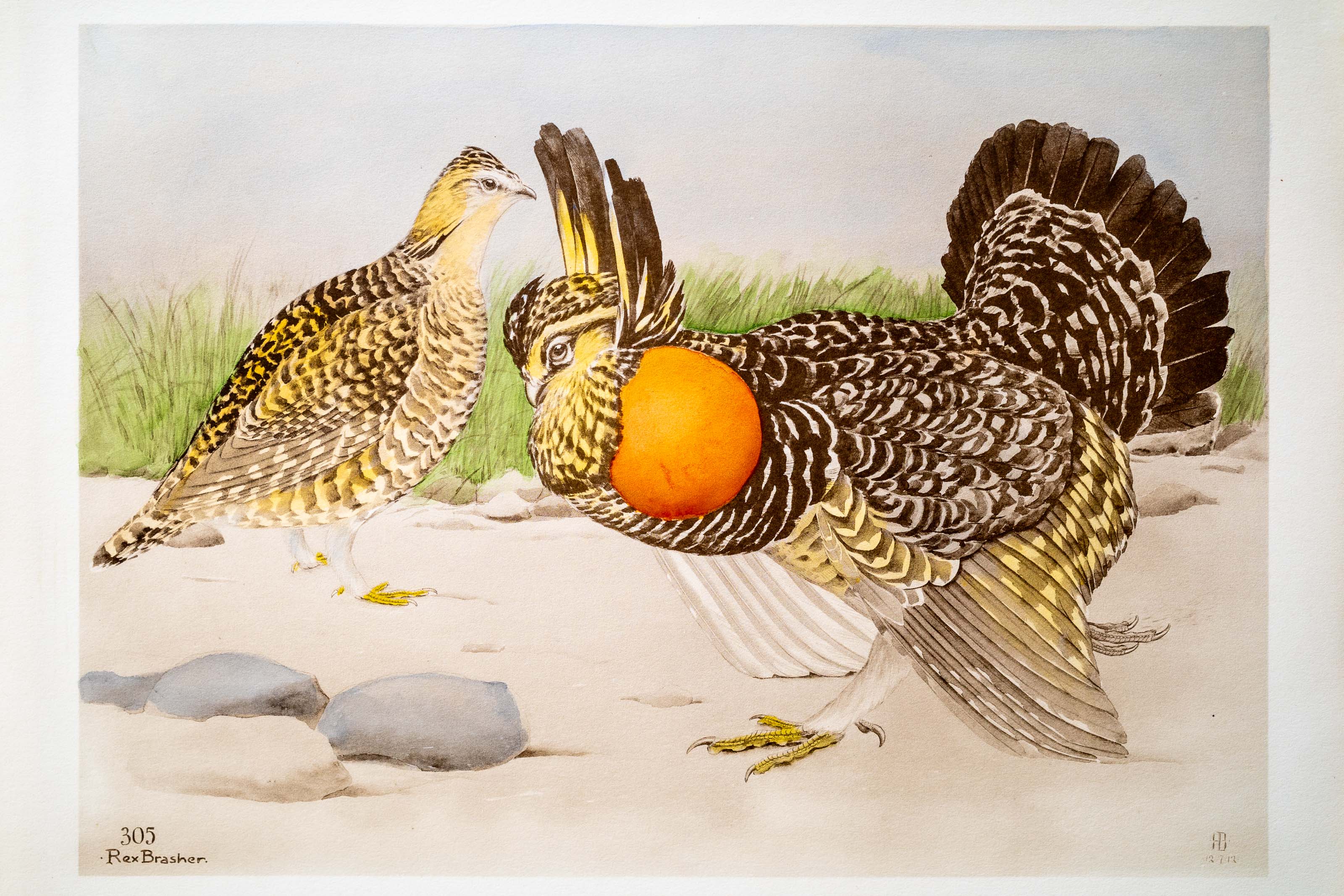
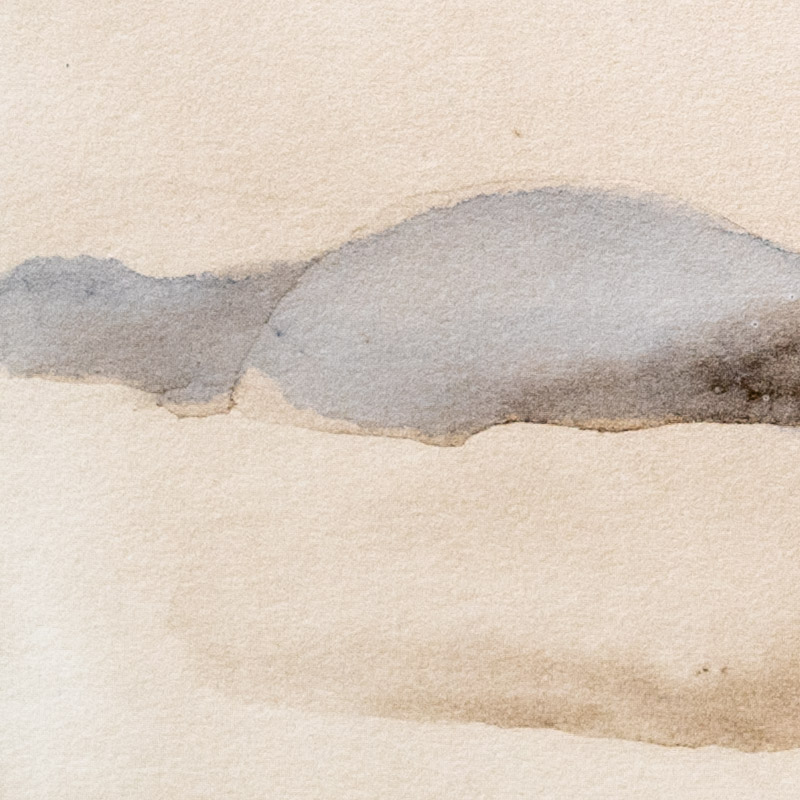

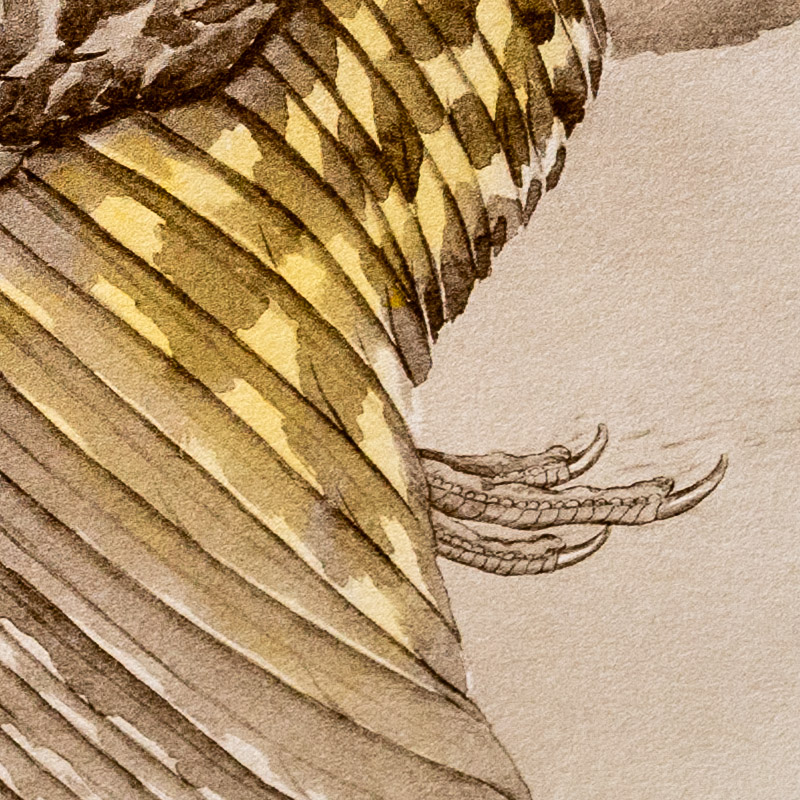
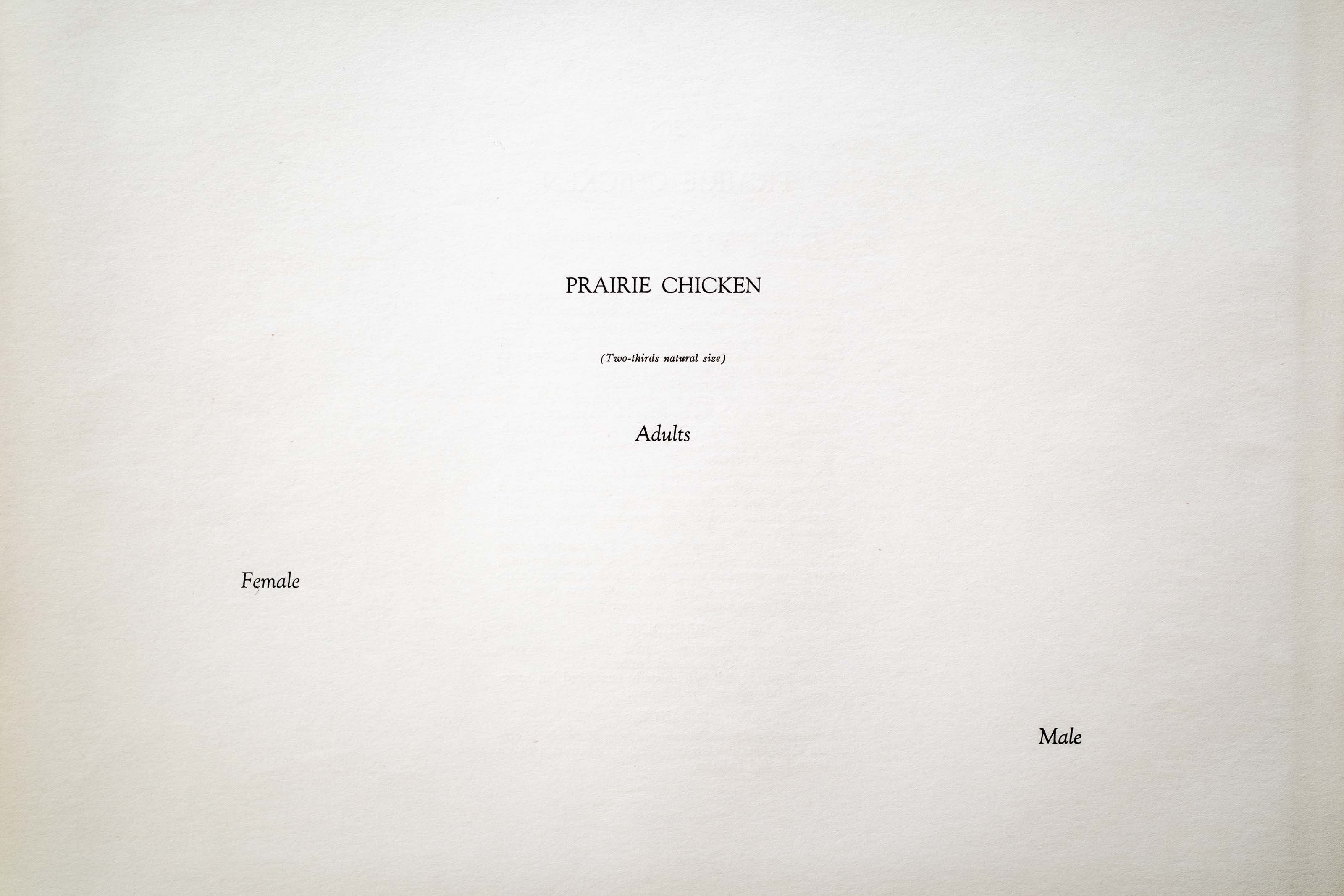
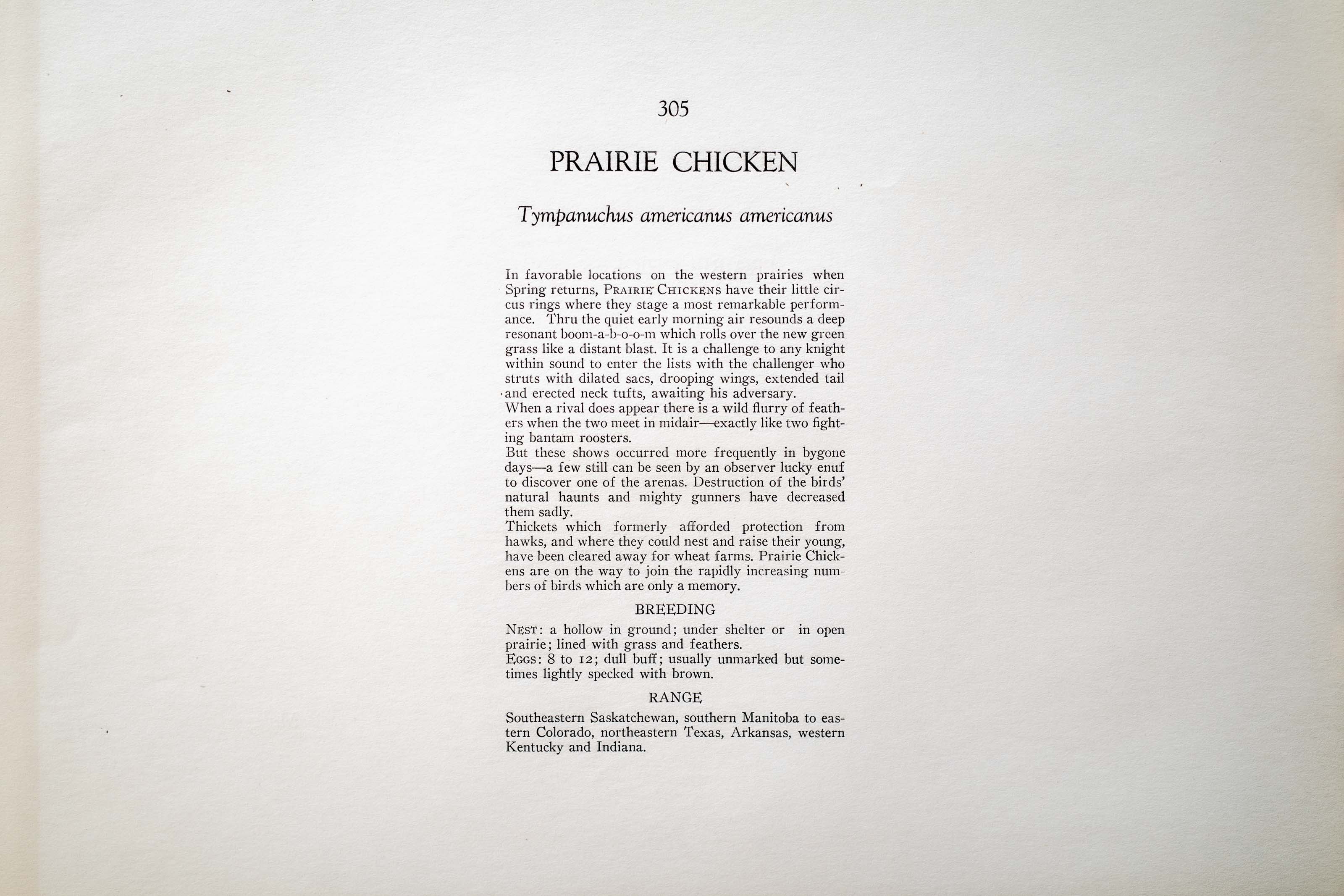

1912
1930
5
305
A team of dedicated board members, volunteers, and student interns has published every page in Volume 9. This volume includes 360 images of paintings and lyrical descriptions of birds, now available online for everyone to enjoy anywhere in the world. This is a monumental task. Each volume requires approximately 400 hours to photograph, edit, transcribe, catalog, and publish online. We need your support to complete this work.
If you're tech-savvy, have a good eye, are meticulous with details, and love structured data, please consider volunteering by emailing us at hello@rexbrasher.org.
We encourage all bird lovers and supporters to consider a monetary donation to support our mission to make Rex's work available for everyone. You can provide a one-time or recurring donation online.
In favorable locations on the western prairies when Spring returns, PRAIRIE CHICKENS have their little circus rings where they stage a most remarkable performance. Thru the quiet early morning air resounds a deep resonant boom-a-b-o-o-m which rolls over the new green grass like a distant blast. It is a challenge to any knight within sound to enter the lists with the challenger who struts with dilated sacs, drooping wings, extended tail and erected neck tufts, awaiting his adversary.
When a rival does appear there is a wild flurry of feathers when the two meet in midair — exactly like two fighting bantam roosters.
But these shows occurred more frequently in bygone days — a few still can be seen by an observer lucky enuf to discover one of the arenas. Destruction of the birds' natural haunts and mighty gunners have decreased them sadly.
Thickets which formerly afforded protection from hawks, and where they could nest and raise their young, have been cleared away for wheat farms. Prairie Chickens are on the way to join the rapidly increasing numbers of birds which are only a memory.
NEST: a hollow in ground; under shelter or in open prairie; lined with grass and feathers.
EGGS: 8 to 12; dull buff; usually unmarked but sometimes lightly specked with brown.
Southeastern Saskatchewan, southern Manitoba to eastern Colorado, northeastern Texas, Arkansas, western Kentucky and Indiana.